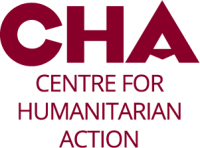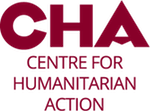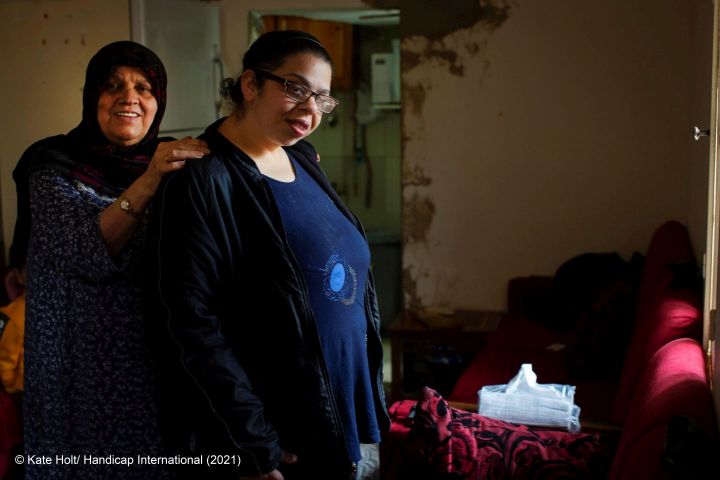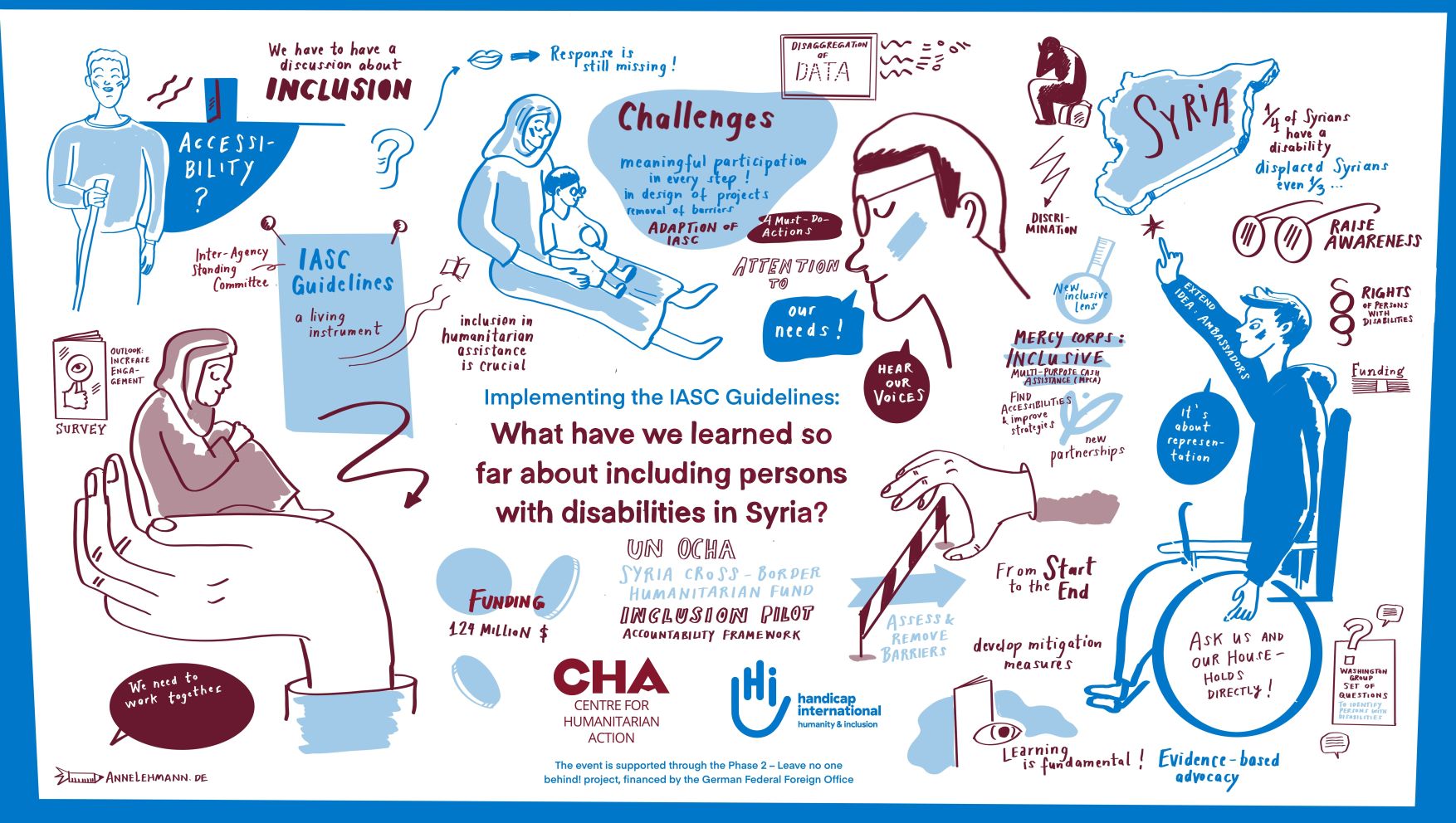| Date: | 29.09.2021 |
| Time: | 12:30 - 14:00 |
| Location: | Online via Zoom with International Sign Interpretation |

On 29 September 2021, Handicap International e.V. and the Centre for Humanitarian Action e.V. have hosted the following online event
Two Years on – The IASC Guidelines on Inclusion of Persons with Disabilities in Humanitarian Action: What Are Promising Practices, Challenges and First Lessons Learned in Syria?
Welcome by Pit Köhler, Head of Division, Humanitarian Assistance – Policy, International Organisations, Multilateral Coordination, German Federal Foreign Office
Discussion with:
- Davide Amurri, Deputy Manager – Head of Monitoring Humanitarian Financing Unit, Syria Cross-border Humanitarian Fund (SCHF), United Nations Office for the Coordination of Humanitarian Affairs (UNOCHA)
- Gulnaz Ibrahim, Ambassador for Persons with Disabilities in Northeast Syria
- Ibrahim Kader, Emergency Programs Coordinator, North East Syria (NES), Mercy Corps
- Ralf Südhoff, Director, Centre for Humanitarian Action
International Sign Interpretation and Live Captioning (ENG) were provided.
Recording
The online event has been recorded. To de-/activate English subtitles, please click on the button inside the YouTube menu (next to the gear icon).
Additional event material:
The accessible PowerPoint presentation can be downloaded here: Presentation slides (as PDF). In this post-edited version, significantly fewer abbreviations were used and all abbreviations are spelled out the first time they occur.
Participants were able to ask questions during the event, but not all of them could be answered. Therefore, all questions have been listed in this accessible file and have been enhanced with further information from Handicap International (HI): Questions and Answers (as PDF).
More information about the speakers here.
The graphic recording shown at the top of this page can also be downloaded as accessible PDF in higher resolution: Graphic Recording (as PDF).
Background of the event:
Men and women, boys and girls with disabilities are disproportionately affected in humanitarian emergencies. For instance, first quality data from the Syrian response demonstrates that 28% of the Syrian population have one or more disabilities, while the global average being 15%.
However, persons with disabilities are among those affected population groups that are least likely to access basic and specific services. For too long, the lack of quality data, led to humanitarian needs overviews that overlooked persons with disabilities. Eventually, resulting in a lack of inclusive humanitarian response plans and strategies.
To address this situation, the Inter-Agency Standing Committee (IASC) “Guidelines on Inclusion of Persons with Disabilities in Humanitarian Action” were launched in 2019. They are the result of an inclusive and participatory consultative process with more than 600 stakeholders from the humanitarian and disability sector. And, they are also the first interagency tool to help improve and steer strategic efforts to better include and engage persons with disabilities in the humanitarian response.
The event was supported through the Phase 2 – Leave no one behind! project, financed by the German Federal Foreign Office.
Guiding Questions:
Almost two years after the launch of the IASC Guidelines we will discuss about how these have been used in humanitarian practice and which challenges remain:
- What are observations and experiences noted by the affected population with disabilities of diverse gender, age and socioeconomic backgrounds in accessing humanitarian assistance in Syria?
- Have the IASC Guidelines helped to guide donors and humanitarian actors at country and headquarter level to strengthen the inclusion, protection and safety of persons with disabilities in humanitarian action?
- What are the challenges to apply the IASC Guidelines and better include a diverse group of the affected population at high risk of being vulnerable?
Cover Photo: Kate Holt/ Handicap International (2021). A Syrian woman living in Lebanon is standing in front of a camera together with her granddaughter who has an intellectual impairment.




